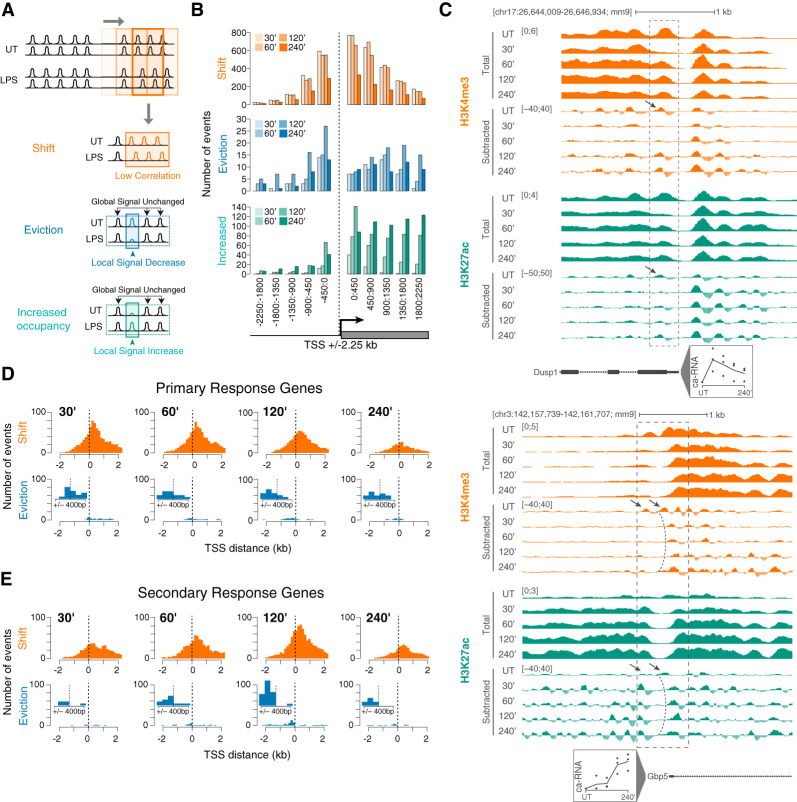Figure 3.
A quantitative approach for detecting inducible nucleosome remodeling events. (A) Schematic representation of the approach used to detect different types of nucleosomal changes induced by stimulation. A sliding window of 450 nucleotides (step size 150 bp) was used to identify local nucleosomal changes within a larger windows (4.5 kb) whose overall signal was not significantly affected by stimulation. Nucleosome shifts were identified as significant drops in correlation between profiles, while evictions and locally increased occupancy were identified as significant decreases/increases that were instead not identified when considering a 4.5-kb window. (B) H3K4me3 was used to determine the distribution of the three distinct types of nucleosome remodeling events at the TSS of LPS-inducible genes at different time points after LPS stimulation. Events are shown in 10 consecutive windows of 450 bp each. (C) Representative genomic regions showing remodeling of TSS-proximal nucleosomes. (D,E) Distributions of nucleosome remodeling events centered on the TSS of primary (D) and secondary (E) response genes at different time points after LPS stimulation. H3K4me3 was used to score nucleosome remodeling. Insets show an enlargement of the distributions of eviction events throughout the central 900 bp around the TSS.

